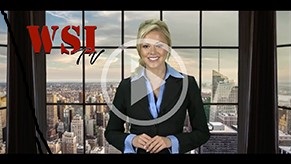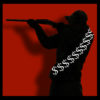 While investing in stocks can be profitable, it may not be for everyone.
While investing in stocks can be profitable, it may not be for everyone.
Are charts and numbers not your thing? Would you prefer a way to make money off of your creative side?
There’s a $1.3 billion hidden market for just that.
I’m going to show you exactly how to get your chunk of that money, and you can add lavish pieces to your interior décor at the same time.
Join the ranks of billionaires with this lucrative opportunity to reconnect with the arts.Most investors will claim that they shy away from the art market because they know nothing about it.
But you don’t need to know Raphael’s technique from Rembrandt’s to make huge gains.
As with any investment, it’s best not to jump in blind, but it doesn’t take as much artistic knowledge as you might think.
Investing in art can come in many forms, and the Establishment would have you think that only the mega-rich can enter this market.
What they don’t want you to know about are the underground tunnels that let the little guys like us in at smaller price points.
Then we can ride the art’s appreciation value up into the stratosphere.
The global hip hop artist Jay-Z, also known as Shawn Carter, is a newly appointed billionaire due to his successful career and investment portfolio.
He can attribute his new status to a combination of smart choices, including a $4.5 million piece by Jean-Michel Basquiat, called Mecca.
Mentioned in one of his songs, Jay-Z not only educated his listeners on late 20 th century art, but also increased his portfolio value by the millions.
So, if a musician from NYC can do it, why can’t you?
The key to getting into art is starting small. If you don’t have millions of dollars to invest upfront, you obviously won’t be buying an original Leonardo DaVinci.
But that’s where I come in. I found a loophole in the art world for you to exploit.
Brush up on your French because the key to your success is called a giclée.
Meaning “splash,” that’s exactly what you’d make if you started hunting for these hidden gems.
Giclées are printed copies of what could be a priceless original.
So, the lump in your throat at a $5,000 original painting could be smoothed down by a $500 high-quality giclée.
Obviously, you can’t expect as much of a return, but they’re a good place to start building capital for the new art investor.
Once you’ve dipped your toe in, and the water went from icy cold to a balmy lukewarm, you can start investing into art more heavily.
Treat art investments like stocks. Their value can go up and down, sometimes unpredictably, and there are no guarantees.
But that doesn’t mean you can’t get your hands on a more liquid investment. Scour the web for art investment funds.
Sort of like a mutual fund, which is a bundle of stocks, these funds ‘collect’ pieces of valuable art that investors like you can bank on.
One of the most profitable, Anthea the Contemporary Art Investment Fund, boasts a 23.4% return since its launch.
Keep in mind, these returns come over time, so art is a good investment to get in early and get comfortable.
If you’re looking to cash out sometime soon, this may not be the choice for you.
Don’t let that discourage you though.
The art experts of the world let some insider hints slip, so let me share them with you to get you started.
First, they suggest looking into women photographers. Their work is a new and emerging market, and wealthy collectors will be looking for their content.
Another good launching point can probably be found in the dusty stores of your attic.
Comic books are becoming ridiculously profitable for those smart enough to save them from the annual garage sale. Rip up that $1 sticker and list it for the $2.16 million Nicholas Cage got for a near-mint copy.
Whether you start this new leg of your journey at a gallery, auction, or even online, art is one of the most lucrative investments out there.
Just be cautious. Art investment is not for the faint of heart, but if you’re willing to take the risk, and gain the reward, this is the option for you.
A work of art is not a share of stock. You can’t call your broker and sell it immediately if you’re unhappy with the results.
Reduced liquidity is one of the barriers to art buying and selling, but if you enter with the right expectations, you can see gains you’ve never imagined could come from paint and canvas.
During the Renaissance, I’m sure masters of the craft didn’t foresee the millions of dollars their sketches fetch, but with your keen eye for talent and profit, you can become ,a sophisticated art investor.
Who knows? Maybe one day your walls will be filled with ornate golden frames and preserved centuries-old canvas. Your bank account will thank me later.





